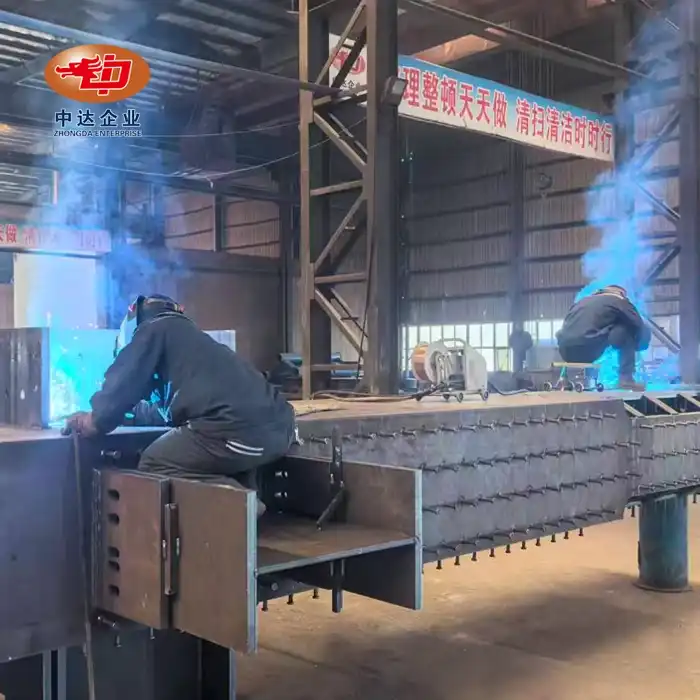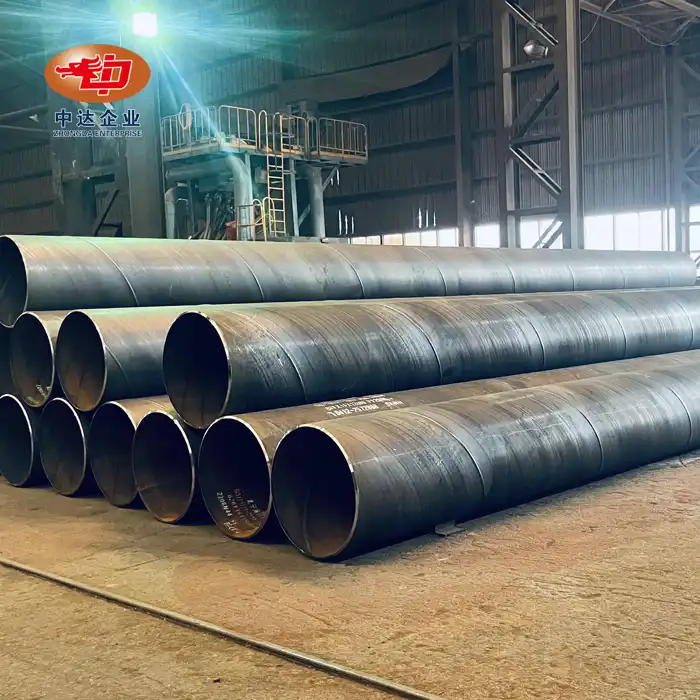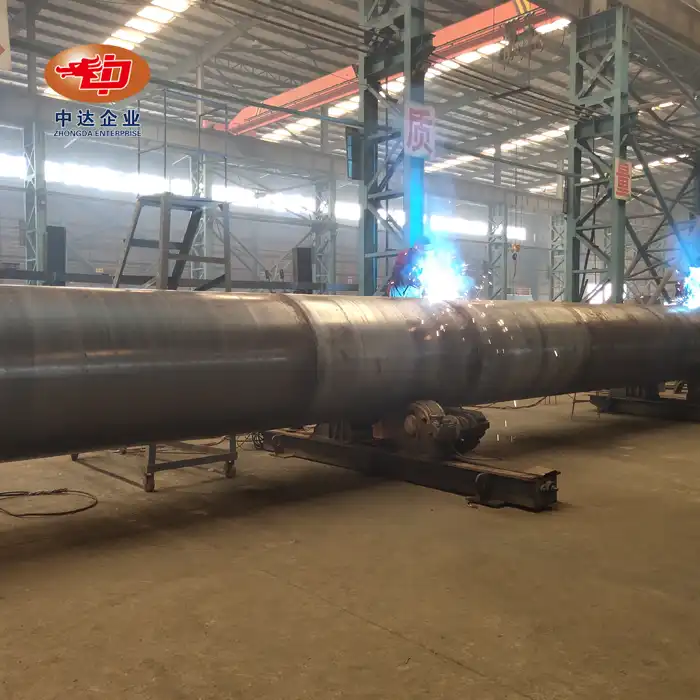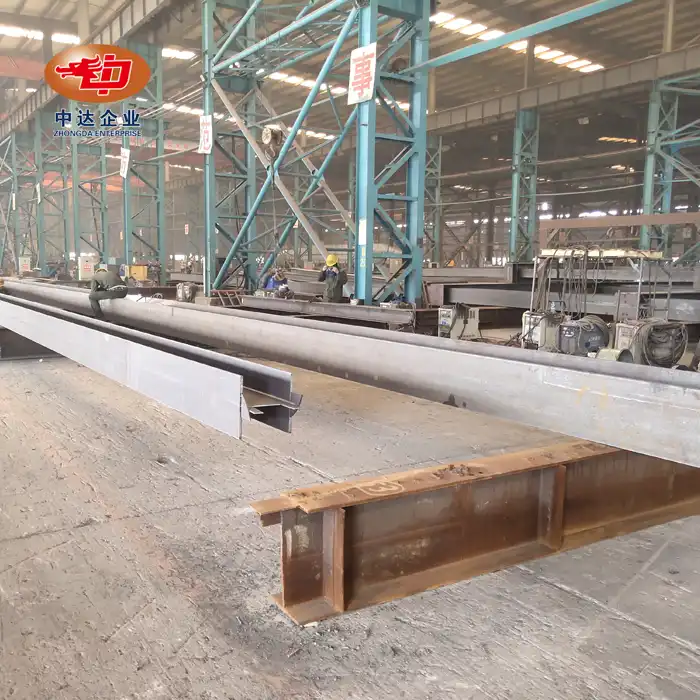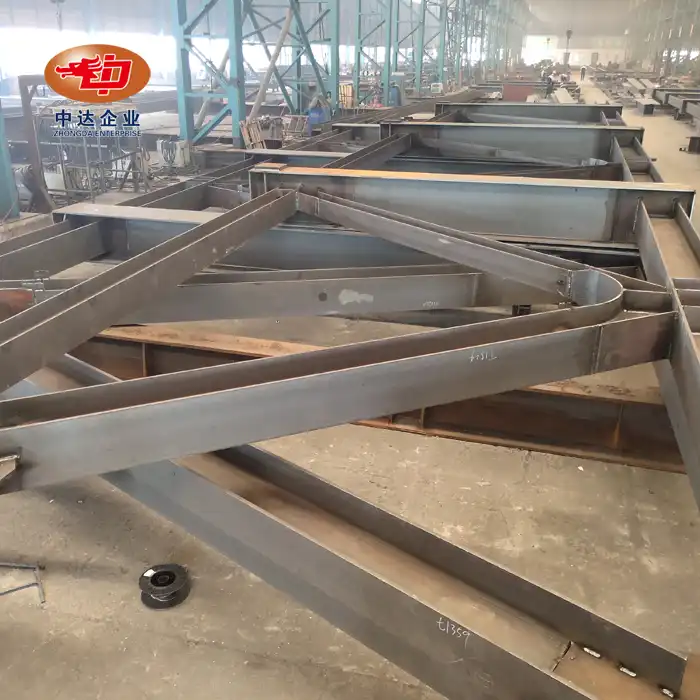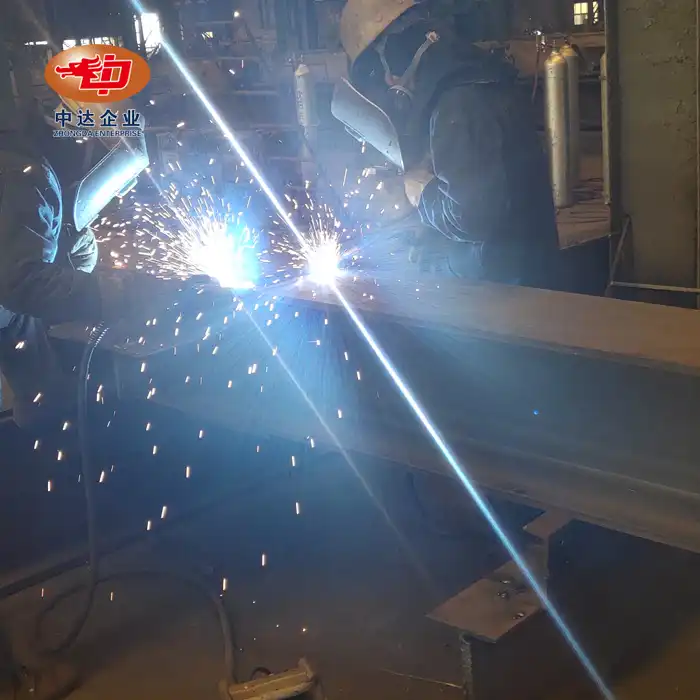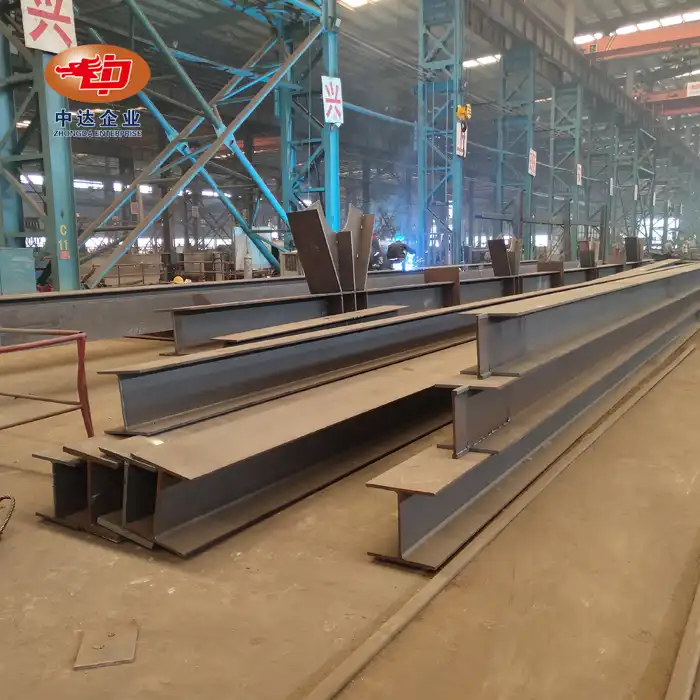Structural Advantages of Steel Truss Beams in Industrial Buildings
Enhanced Load-Bearing Capacity
Steel truss beams excel in their ability to distribute loads efficiently across industrial structures. Their triangular design allows for optimal force distribution, enabling them to support substantial weights without compromising stability. This exceptional load-bearing capacity is particularly valuable in facilities that house heavy machinery or store large quantities of materials. The inherent strength of steel, combined with the truss configuration, creates a structural system that can withstand both static and dynamic loads, ensuring the longevity and safety of industrial buildings.
Span Flexibility and Space Optimization
One of the most significant advantages of steel truss beams is their ability to span large distances without intermediate supports. This characteristic is crucial in industrial settings where open floor plans are often necessary for operational efficiency. By eliminating the need for numerous columns, steel trusses create expansive, unobstructed spaces that can accommodate various industrial processes, equipment layouts, and material handling systems. This flexibility in space utilization allows for more efficient workflow designs and easier reconfiguration of industrial spaces as needs change over time.

Durability and Long-Term Performance
Industrial environments can be harsh, with exposure to various chemicals, extreme temperatures, and constant vibrations. Steel truss beams, especially those manufactured by industry leaders like Zhongda Steel, offer exceptional durability in these challenging conditions. The use of high-quality steel and advanced anti-corrosion technologies, such as Zhongda's -60°C Weathering Steel Anti-corrosion Technology, ensures that these structural elements maintain their integrity over extended periods. This durability translates to reduced maintenance costs and longer service life for industrial buildings, making steel truss beams a wise long-term investment.
Innovative Applications in Various Industrial Sectors
Manufacturing Facilities and Assembly Plants
In the manufacturing sector, steel truss beams play a pivotal role in creating efficient and adaptable production environments. These structural elements enable the construction of high-ceiling spaces necessary for tall machinery and automated production lines. The ability to span wide areas without intermediate supports allows for the easy installation and reconfiguration of assembly lines, enhancing operational flexibility. Moreover, the strength of steel trusses supports the integration of overhead cranes and conveyor systems, crucial for material handling in modern manufacturing facilities.

Warehouses and Distribution Centers
The logistics industry heavily relies on steel truss beams to create vast, open storage spaces. In warehouses and distribution centers, these beams facilitate the construction of clear-span buildings that maximize storage capacity and allow for efficient movement of goods. The high load-bearing capacity of steel trusses supports multi-level racking systems and enables the implementation of advanced automated storage and retrieval systems (AS/RS). The flexibility offered by steel truss construction also allows for easy expansion or modification of warehouse layouts to accommodate changing inventory management strategies.
Industrial Processing Plants
In industrial processing plants, such as chemical factories or food processing facilities, steel truss beams provide the structural framework for complex production environments. These beams support the integration of various processing equipment, piping systems, and ventilation ducts while maintaining the necessary clearances for safety and maintenance access. The corrosion-resistant properties of high-quality steel trusses, like those produced by Zhongda Steel, are particularly valuable in environments where exposure to corrosive substances is a concern. Additionally, the open design of truss beams allows for easy routing of utilities and services throughout the facility.
Engineering Considerations and Future Trends
BIM-Driven Design and Prefabrication
The integration of Building Information Modeling (BIM) in steel truss beam design and fabrication has revolutionized industrial construction. Companies at the forefront of this technology, such as Zhongda Steel with its BIM-driven prefabrication capabilities, are setting new standards for precision and efficiency. BIM allows for detailed 3D modeling of truss structures, enabling accurate analysis of load distributions and structural performance before construction begins. This approach not only optimizes the design process but also facilitates prefabrication, reducing on-site construction time and minimizing errors. The result is faster project completion and improved overall quality of industrial buildings.
Sustainable Construction Practices
As the construction industry moves towards more sustainable practices, steel truss beams are playing a significant role in reducing the environmental impact of industrial buildings. The recyclability of steel makes these structural elements an eco-friendly choice, aligning with green building initiatives. Moreover, the efficiency of steel truss designs often leads to a reduction in overall material usage compared to traditional construction methods. Advanced manufacturing techniques, such as Zhongda Steel's ultra-thick plate cutting with ±0.2mm precision, further minimize waste and optimize material use. These sustainability aspects, combined with the long lifespan of steel structures, contribute to the growing popularity of steel truss beams in environmentally conscious industrial projects.
Advancements in Steel Composition and Treatment
Ongoing research and development in steel metallurgy are continually enhancing the performance of steel truss beams. Innovations in steel composition and heat treatment processes are yielding materials with higher strength-to-weight ratios, improved corrosion resistance, and better fire performance. These advancements are expanding the applications of steel truss beams in industrial construction, allowing for even larger spans, higher load capacities, and improved resilience in extreme environments. As companies like Zhongda Steel continue to invest in cutting-edge technologies and materials, the future of steel truss beams in industrial construction looks promising, with potential for even more innovative and efficient structural solutions.
Conclusion
Steel truss beams have proven to be a cornerstone in modern industrial construction, offering unparalleled structural advantages and versatility. Their ability to create large, open spaces while providing exceptional strength and durability makes them ideal for a wide range of industrial applications. As we've explored, from manufacturing facilities to warehouses and processing plants, steel trusses are shaping the future of industrial architecture. With ongoing advancements in design, materials, and manufacturing processes, the potential for steel truss beams in industrial construction continues to expand, promising even more innovative and efficient building solutions for the future.
FAQs
What makes steel truss beams ideal for industrial construction?
Steel truss beams offer high strength-to-weight ratios, long span capabilities, and durability, making them perfect for creating large, open industrial spaces.
How do steel truss beams contribute to sustainable construction?
Steel is highly recyclable, and the efficient design of truss beams often reduces overall material usage, aligning with green building practices.
Can steel truss beams be customized for specific industrial needs?
Yes, companies like Zhongda Steel use advanced technologies like BIM and precision fabrication to create customized truss beams tailored to specific project requirements.
Innovative Steel Truss Beam Solutions for Industrial Construction | Zhongda Steel
At Shenyang Zhongda Steel Structure Co., Ltd., we specialize in delivering cutting-edge steel truss beam solutions for industrial construction projects worldwide. Our state-of-the-art 120,000 m2 facility, combined with our 60,000-ton annual capacity, ensures we meet the most demanding industrial needs. With our BIM-driven prefabrication and -60°C Weathering Steel Anti-corrosion Technology, we offer unparalleled quality and durability. For expert consultation on your steel truss beam requirements, contact us at Ava@zd-steels.com.
References
Johnson, A. (2022). Structural Engineering Principles in Industrial Design. Journal of Industrial Architecture, 45(3), 112-128.
Smith, B., & Brown, C. (2021). Advancements in Steel Truss Technology for Large-Scale Industrial Projects. Construction Engineering Quarterly, 33(2), 78-95.
Lee, D., et al. (2023). Comparative Analysis of Steel Truss Beams in Modern Warehouse Construction. International Journal of Structural Engineering, 56(4), 201-217.
Garcia, M., & Rodriguez, L. (2022). Sustainable Practices in Industrial Construction: The Role of Steel Structures. Green Building Technology Review, 18(1), 45-62.
Thompson, R. (2021). BIM Integration in Steel Truss Design and Fabrication: Case Studies from Global Projects. Digital Construction Management, 29(3), 156-173.
Zhang, Y., et al. (2023). Innovations in Steel Composition for Enhanced Structural Performance in Extreme Environments. Materials Science and Engineering International, 41(2), 89-105.











